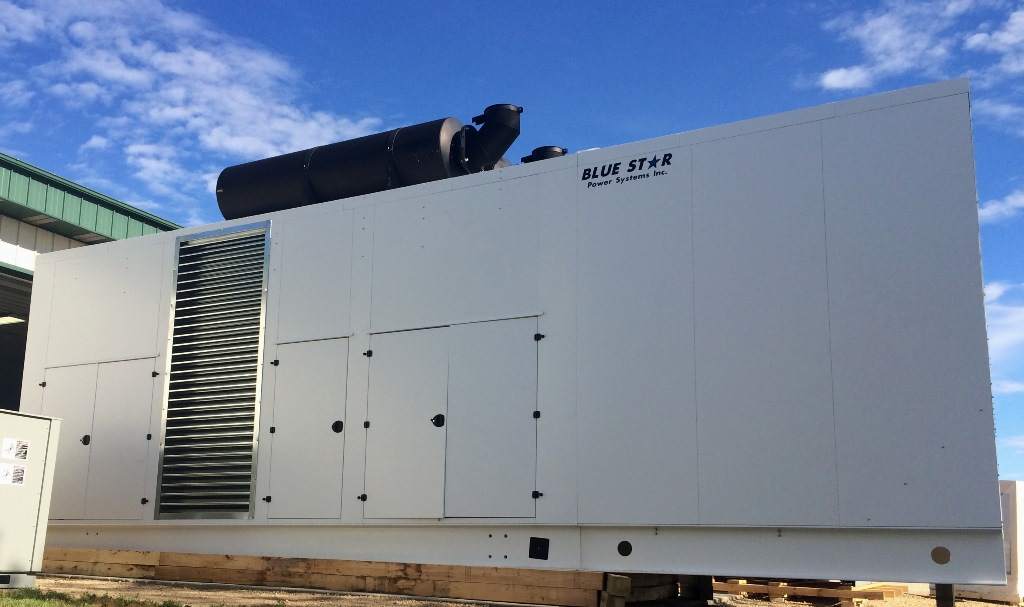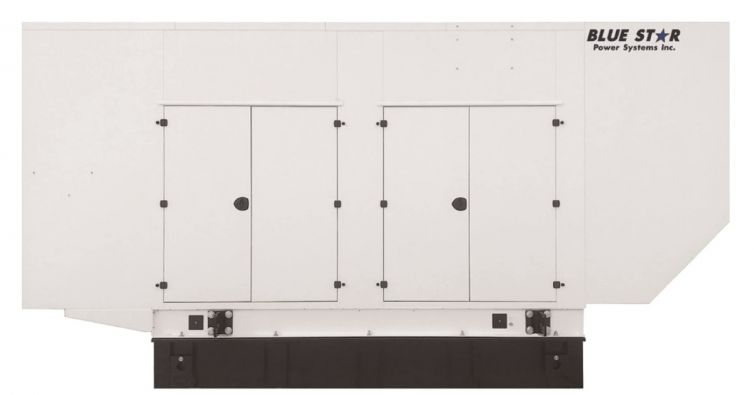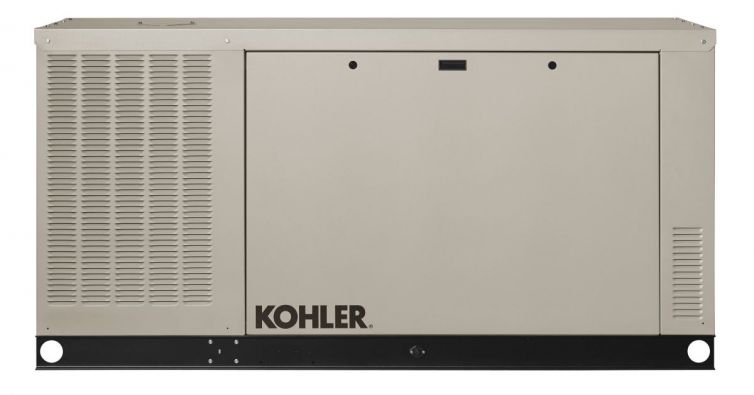Standby generators have become essential for many individuals and businesses, providing a reliable source of power during outages. Understanding how long a standby generator can run for is crucial for proper planning and preparedness. In this article, we will explore the various factors that influence the runtime of a standby generator, tips to maximize runtime, safety precautions, the integration of backup battery systems, and planning for extended outages.
To fully grasp the concept of standby generator runtime, it is essential to have a clear understanding of what standby generators are and how they differ from other types of generators. Standby generators are specifically designed to automatically provide backup power when the main power source fails. Unlike portable generators, standby generators are permanently installed and come equipped with an automatic transfer switch, ensuring a seamless transition to backup power.
Factors influencing the runtime of a standby generator
Several factors significantly impact the duration a standby generator can run for. These factors include fuel capacity, load capacity, environmental conditions, and maintenance and upkeep.
A. Fuel capacity
Determining the generator’s fuel tank size: The size of the fuel tank directly affects the runtime of a standby generator. Generators with larger fuel tanks typically are capable of running for longer periods before requiring refueling. It is crucial to know the fuel tank size of your generator to estimate its runtime accurately.
The impact of fuel type on runtime: Different fuel types, such as diesel, natural gas, or propane, have varying energy densities and burning rates. Understanding the fuel type your generator utilizes will help determine its runtime.
B. Load capacity and generator size
Understanding the maximum load the generator can handle: Standby generators have specific load capacities, which indicate the maximum electrical load they can support. Exceeding this limit can reduce runtime and potentially damage the generator.
Adjusting load capacity to optimize runtime: Proper load management is crucial for maximizing the runtime of a standby generator. By balancing the electrical load throughout the building and avoiding overloads, you can optimize runtime.
C. Environmental conditions
Impact of temperature on generator operation: Extreme temperatures, whether extremely hot or cold, can affect the performance and runtime of a standby generator. Understanding the temperature requirements and limitations of your generator will help ensure optimal runtime in different weather conditions.
Considerations for extreme weather conditions: Certain environmental conditions, such as high humidity or severe storms, can impact the runtime of a standby generator. It is important to consider these factors and take appropriate measures to protect the generator and optimize its runtime.
D. Maintenance and upkeep
Regular maintenance to ensure optimal performance: Proper maintenance, including regular inspections, oil changes, and filter replacements, is essential for the smooth operation and longevity of a standby generator. Neglecting maintenance can lead to decreased runtime and potential breakdowns.
The effect of neglected maintenance on runtime: Over time, lack of maintenance can cause components to wear out, reducing the generator’s efficiency and overall runtime. Regular maintenance ensures that the generator operates at its peak performance and maximizes runtime.
Understanding runtime specifications

To determine how long a standby generator can run, it is important to understand the different runtime measurements and their significance.
A. Typical runtime measurements
Continuous runtime: Continuous runtime refers to the duration a standby generator can run without interruption under full load conditions. This specification is vital for commercial and industrial applications that require extended power backup.
Prime power rating: The prime power rating represents the maximum power output a generator can deliver for an extended period. It is important to understand this rating to estimate the generator’s runtime accurately.
B. Importance of determining the needed runtime
The required runtime of a standby generator depends on the specific needs of the user, whether it is a residential or commercial setting. Assessing the essential electrical needs during an outage helps determine the necessary runtime of the standby generator.
Tips to maximize standby generator runtime

To make the most of your standby generator’s runtime, implementing certain practices can help conserve energy and optimize its performance.
A. Conserving energy during power outages
1. Utilizing energy-efficient appliances and electronics: Energy-efficient devices consume less power, allowing the generator to run for longer periods without running out of fuel.
2. Implementing smart energy management systems: Smart energy management systems automatically control and regulate power usage, optimizing runtime by reducing unnecessary power consumption.
3. Prioritizing essential power needs over non-essential ones: During an outage, it is crucial to prioritize and limit the use of electrical devices to essential ones. This helps conserve energy and extend the runtime of the standby generator.
B. Proper load management
1. Balancing the electrical load throughout the building: Distributing power evenly across circuits reduces the likelihood of overloads and allows the standby generator to operate more efficiently.
2. Avoiding overloads by distributing power strategically: Identifying critical circuits and load-shedding non-essential ones can prevent overloads and ensure that the generator operates within its capacity limits.
3. Utilizing load-shedding techniques to optimize runtime: Load-shedding involves temporarily reducing or shutting off certain non-essential loads to prioritize the operation of essential devices and prolong the generator’s runtime.
C. Fuel considerations for extended outages
Extended power outages require careful planning and preparation to ensure an adequate fuel supply for the standby generator.
1. Having adequate fuel storage for prolonged power loss: Assessing the potential duration of an outage and having sufficient fuel reserves can provide peace of mind and allow the generator to run for an extended period without interruption.
2. Rotating fuel to ensure freshness and reliability: Regularly rotating fuel reserves helps maintain their quality, ensuring that the standby generator operates efficiently when needed.
3. Stocking up on fuel during critical times: In anticipation of severe weather events or situations that may result in power outages, it is essential to stock up on additional fuel to extend the generator’s runtime during prolonged periods without power.
Safety precautions and generator limitations

While standby generators provide a reliable backup power source, it is vital to understand their limitations and implement necessary safety precautions.
A. Understanding generator safety guidelines
1. Importance of proper ventilation: Standby generators produce exhaust fumes, which can be hazardous if not properly ventilated. Ensure that the generator is positioned in a well-ventilated area to prevent the accumulation of harmful gases.
2. Positioning the generator away from combustible materials: To minimize the risk of fire, generators should be placed at a safe distance from any flammable materials, such as vegetation, buildings, or fuel storage.
3. Regular inspections for leaks or damage: Periodically inspecting the generator for leaks, damage, or signs of wear ensures safe operation and helps prevent accidents.
B. Overloading and overheating prevention
1. Monitoring the generator’s load capacity to avoid exceeding limits: Regularly monitoring the electrical load on the generator helps prevent overloading, which can lead to decreased runtime and potential damage.
2. Mitigating the risk of overheating through proper ventilation and maintenance: Proper ventilation and regular maintenance, such as cleaning air filters and checking coolant levels, help prevent the generator from overheating. Overheating can shorten runtime and reduce the lifespan of the generator.
3. Understanding the consequences of overloading and overheating: Overloading a generator or allowing it to overheat can result in costly damage, decreased runtime, and even pose a safety hazard. Taking preventive measures to avoid overloading and overheating is crucial for the optimal performance and longevity of the standby generator.
Utilizing backup battery systems alongside standby generators
Integrating backup battery systems with standby generators can provide additional runtime and enhance the overall reliability of the backup power system.
A. Benefits of integrating battery backup systems
1. Seamless transition during power fluctuations: Backup battery systems complement standby generators by providing instantaneous power whenever there is a brief interruption or fluctuation in the main power source. This seamless transition helps maintain essential electrical operations without interruption.
2. Extended runtime in combination with standby generators: By combining a backup battery system with a standby generator, it is possible to further extend the runtime during extended power outages. The battery system acts as a buffer, providing continuous power while the generator runs periodically to recharge the batteries.
3. Reducing reliance on generator fuel: Utilizing battery backup systems alongside standby generators can reduce the reliance on fuel and allow the generator to run less frequently, ultimately maximizing the generator’s overall runtime.
B. Choosing the right battery system for your needs
When selecting a backup battery system, it is important to consider your specific power requirements and compatibility with the standby generator.
1. Assessing power requirements and desired runtime: Evaluate the electrical load you intend to power and determine the runtime you require during an outage. This assessment informs the capacity and size of the battery system needed to complement the standby generator.
2. Understanding battery capacity and limitations: Battery systems come in various capacities, typically measured in kilowatt-hours (kWh). Understanding the capacity of the battery system helps determine its ability to sustain power for the desired duration and support the electrical load requirements.
3. Matching battery technology with generator specifications: Consider the compatibility between the battery system and your standby generator. Different battery technologies, such as lead-acid or lithium-ion, have their own advantages and limitations. It is essential to select a battery system that complements the specifications and requirements of the standby generator for optimal performance and runtime.
Planning for extended outages
Preparing for extended power outages requires thoughtful planning and implementing strategies to ensure long-term power availability.
A. Developing an emergency preparedness plan
1. Assessing potential risks and vulnerabilities: Identify potential risks specific to your area, such as severe weather, natural disasters, or grid failures. Analyzing vulnerabilities helps develop a comprehensive emergency preparedness plan.
2. Creating a communication strategy for power outages: Establish a communication plan to keep residents, employees, or family members informed during a power outage. This strategy ensures a timely response and promotes safety and awareness.
3. Stockpiling essential supplies for prolonged outages: Prepare adequate supplies of essential items such as food, water, medicine, and emergency equipment to sustain during extended power outages. Having these supplies readily available can mitigate the impact of prolonged downtime and help maintain comfort and safety.
B. Alternative power sources during extended outages
In addition to standby generators and backup battery systems, exploring alternative power sources can provide additional options for extended outages.
1. Exploring renewable energy options: Renewable energy sources such as solar panels or wind turbines can provide sustainable power during extended outages. Integrating renewable energy systems with standby generators and battery backup systems can create a reliable and environmentally friendly power solution.
2. Portable generator usage during extended downtime: Portable generators can supplement the runtime of standby generators during extended power outages. By strategically utilizing portable generators for non-essential loads, it is possible to extend the runtime of the standby generator for critical power needs.
3. Connecting multiple generators for increased capacity: In cases where the power demand exceeds the capacity of a single standby generator, connecting multiple generators can increase the total power output and extend runtime. Proper synchronization and load distribution among the generators are key considerations to ensure efficient operation.
Usually ships in 17 weeks after place the order.
Usually ships in 17 weeks after place the order.
Usually ships in 31 weeks after place the order.
In stock
Frequently asked questions about standby generator runtime
Providing answers to commonly asked questions can help address specific concerns and provide clarity
A. How long can a standby generator run without refueling?
The runtime of a standby generator without refueling depends on various factors such as the generator’s fuel tank size and fuel consumption rate. Generators with larger fuel tanks can often run for several hours or even days before requiring refueling. However, it is crucial to consult the manufacturer’s specifications and consider the generator’s load capacity to estimate the runtime accurately.
B. Can standby generators run indefinitely?
Standby generators are not designed to run indefinitely. They require regular maintenance and refueling to ensure optimal performance and longevity. Continuous operation without necessary maintenance or refueling can lead to decreased performance, potential breakdowns, and safety hazards. It is important to follow manufacturer guidelines and adhere to regular maintenance schedules.
C. Can the runtime of a standby generator be extended with additional fuel?
Adding additional fuel to a standby generator can definitely extend its runtime. However, it is crucial to ensure that the fuel storage complies with safety regulations and that the fuel is properly rotated to maintain its quality and reliability. It is recommended to consult with a professional or the generator manufacturer to determine the safe and appropriate storage and usage of additional fuel.
D. Is it possible to increase the load capacity of a standby generator for longer runtime?
The load capacity of a standby generator is predetermined by its design and specifications. Exceeding the generator’s load capacity can result in decreased runtime, potential damage, and safety hazards. It is not advisable to attempt to increase the load capacity beyond the manufacturer’s recommendations. If additional power capacity is required, consulting with a professional to evaluate the feasibility of connecting multiple generators or exploring alternative power sources is recommended.
Available ex factory. (Call to confirm)


Available ex factory. (Call to confirm)
Available ex factory. (Call to confirm)


Available ex factory. (Call to confirm)
Understanding the runtime of a standby generator is crucial for proper planning and preparedness during power outages. Factors such as fuel capacity, load capacity, environmental conditions, and maintenance play a significant role in determining the duration a standby generator can run for. Implementing strategies to maximize runtime, such as conserving energy, managing loads effectively, and considering backup battery systems, can further enhance the generator’s performance. Additionally, ensuring proper safety precautions and planning for extended outages are essential aspects of a comprehensive emergency preparedness plan. By considering the unique requirements and limitations of standby generators, individuals and businesses can confidently rely on backup power solutions to maintain essential operations during power outages.






